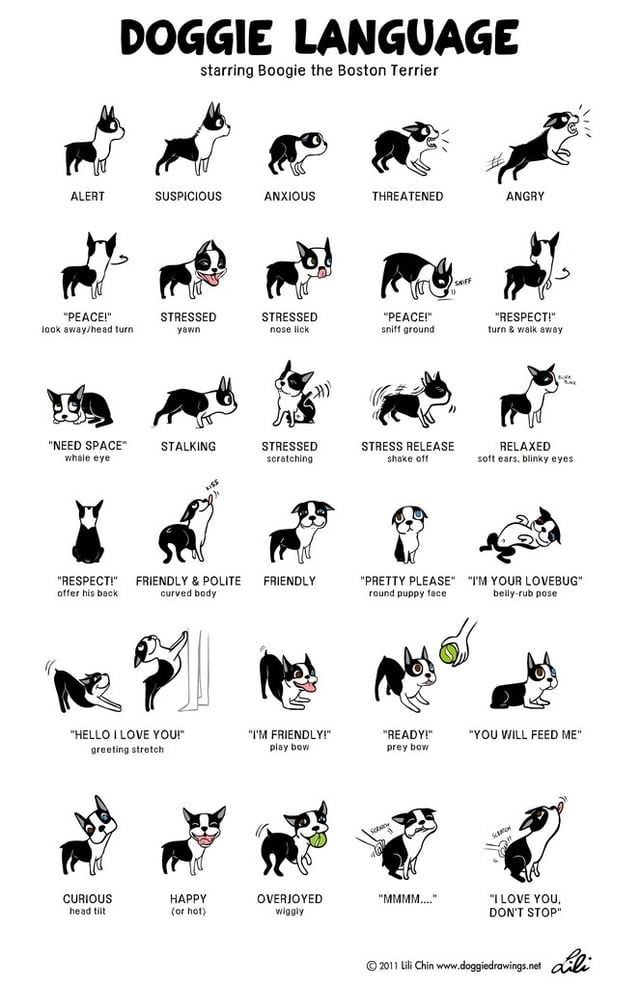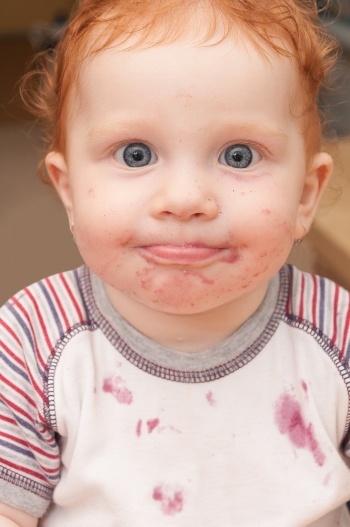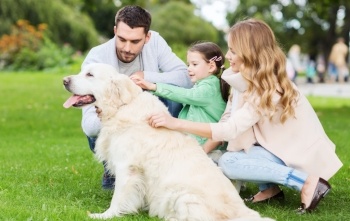 When you get a new dog, you may be eager and excited to welcome this new member of your family into your home, and your kids will likely be consumed with giddiness and the anticipation of a new best friend.
When you get a new dog, you may be eager and excited to welcome this new member of your family into your home, and your kids will likely be consumed with giddiness and the anticipation of a new best friend.But before your kids try to smother your new puppy or dog with hugs and kisses, you need to consider how best to make these important introductions, and how to do so safely for all involved.
- What to watch out for when introducing a new puppy or dog
- How to create a plan and safely make the introduction
- How to ensure continued success with your new dog
- The benefits you can expect from bringing a puppy or adult dog into a child’s life
How to Keep Your Children and Dog Safe
When you bring a puppy or dog into your home, you’re not only exposing your children to the dog, you’re also exposing the dog to your children. Here are some potential safety concerns and hazards for you to be aware of and try to avoid.
Risks to the Child From a Dog
- Dog bite – learn about preventing dog bites to children at stopthe77.com
- Intestinal parasites from dog feces; e.g., roundworm, tapeworm, and others
- Fleas
- Intestinal bacteria, like Salmonella, which can be transmitted from the dog’s food — especially if they’re fed a raw diet — to kids who aren’t exactly known for their handwashing and other hygiene
Risks to the Dog From a Child
- Increased stress and anxiety from being chased, poked, and prodded
- Poisoning by ingesting common items such as infant pain relievers, diaper creams, or grapes or raisins a small child drops on the floor or intentionally shares with the dog.
Also, be mindful of Xylitol in teething wipes or some children’s toothpaste (learn more about which products contain Xylitol). - Traumatic injuries, such as broken bones, for which puppies and small breed dogs are particularly vulnerable. It can be easy for young children to inadvertently sit or step on a small dog, or even drop them when standing and holding a squiggly puppy.
- For more information about keeping pets and kids safe together, read “Pets and Pacifiers – When children and animals don’t mix.”
How to Create an Introduction Plan
Each family should create a structured plan that is right for them and their new dog.
See my recommended list of five questions to consider as you develop your unique plan in my article “How to Introduce Your New Dog to Your Other Pets,” which also goes over how (and why) you can use tools to help during introductions. Helpful tools include positive reinforcement, pheromones, and walks, and playtime to tire out your dog beforehand.
Preparing for the Introduction
Talk to your children about the importance of being calm and gentle with their new pet. Let them know your new dog may be nervous, afraid, or over-excited, and they may not know how to react to their new family.
Explain and demonstrate different types of dog body language your children should watch out for. You can review and download this great Doggie Language poster by Lily Chin for guidance.

Teach your children when they need to back away and let the dog have its space, and do so before they are introduced to their new dog. Here are a few additional quick tips to prepare for the introduction:
- Make sure your kids, and their clothes, aren’t covered in food stains and scraps. You don’t want your new dog knocking anyone over in their eagerness to get a taste!
- Make sure you have at least two responsible adults present and engaged during the introduction. One adult will need to focus on the dog, while another (or more) focuses on the kids.
- If you have multiple children, it can be helpful to make introductions with just one or two kids at a time, depending on their ages and abilities to stay calm.
 How to Introduce Your Dog to Your Children
How to Introduce Your Dog to Your Children
Ideally, your children will have met and helped select the dog at the shelter, rescue group, breeder, or elsewhere. This will help start the bonding and give children a “buy-in” to the process.
Regardless of whether your children were a part of the initial dog selection process or not, consider these strategies when your new dog finally comes home.
- Use tricks: If the new dog knows a trick like “sit,” you can show the kids how to give this cue and then reward the dog with praise or a treat when it responds correctly.
- Watch out for mouths: Since your dog may not yet know how to take food treats with a soft mouth, take steps to avoid an accidental nip. Treats can be dropped on the ground rather than given directly to the dog’s mouth, given with a flat hand rather than from a fist, or the dog can be taught a “gentle” cue.
- Be gentle: Show your children how to pet the dog gently and how to praise the dog when it behaves well. Monitor the dog’s body language to make sure that everyone, including the dog, is comfortable during each of these interactions.
- Take a walk: Going for a walk through the neighborhood together, as outlined in dog-dog introductions, can be a helpful way for everyone to get comfortable in a neutral environment. This also allows for multiple short interactions through the walk, rather than a single, long interaction at home.
- Leash up: When you start allowing less-structured interactions between the new dog and children, it can be helpful to leave a short, lightweight leash attached to the dog’s collar for use as a “handle” to regain control quickly and easily if things start getting out of hand.
- Save toys for later: Be mindful of toys, long-lasting food items, dog chews, or other objects that might turn a peaceful greeting into a rough-and-tumble play session, or upset a possessive dog that is still unsure of their new environment.
Preparing for Future Success With Your Puppy and Children
When should a child be allowed unsupervised time with the puppy?
This is a difficult question to answer without a full description of the many variables at play. As a rule, children should not be left alone with a dog — even the known family dog — without adult supervision. This is for everyone’s safety and peace of mind.
Can my kids help with training the puppy?
Absolutely, 100%, YES! When kids are involved with positive reinforcement, non-confrontational/dominance-based training, it is great for everyone. In addition to the clear benefits of training your dog, involving your children will help them develop an empathetic way of communicating with animals and, by extension, other people.
How much involvement depends largely upon:
- The child’s age
- The dog’s age
- The child’s maturity level and attention span
Talk with your trainer to figure out when and how your kids can be involved with training your dog.
Why Dogs Are Good for Children
Whether your new family dog is a puppy or an adult, scientific studies and experience have shown that there are many benefits from having your children grow up with a canine companion. Here are a few:
- Dogs help teach empathy: Pets have been shown to help children develop higher emotional intelligence (EQ), which is a key indicator for the child’s success.

- Dogs keep children active: Researchers in London found that children with dogs spent more time engaged in physical activity (more than five hours per day, on average) than children without dogs.
- Dogs reduce children's risk of asthma: A Swedish study found that exposure to a dog in the first year of life was linked to a 13% lower risk of asthma in later childhood.
- Dogs mean less stress and anxiety: The Centers for Disease Control and Prevention (CDC) discovered that children with dogs were about half as likely to test positive for anxiety.
- Dogs are great reading buddies: You read that right. A University of California, Davis study confirmed that children who read out loud to their dogs (which provide a nonjudgmental audience and comforting reading buddy) improved their reading skills by 12 percent over the course of a 10-week program.
- Dogs are a kid’s best friend: This hardly needs citation as anyone who’s seen a child with a dog knows how quickly they can become inseparable.
Conclusion
Introductions to your new dog should be an ongoing process, not a one-time, high-stakes encounter. Taking the time to educate your kids and create the right environment will improve safety for everyone and maximize your chances for a loving, healthy relationship between your new dog and your children that will be a joy to watch for years to come. Best of luck, and enjoy!
What experiences have you had when introducing a new dog into your home? What's worked? What hasn't? Please share your new-dog-introduction stories and tips with the community in the comments section below.



 How to Introduce Your Dog to Your Children
How to Introduce Your Dog to Your Children


